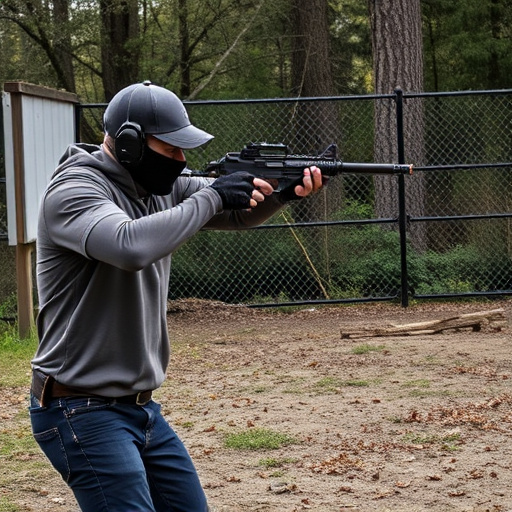Stun Gun Safety Switch: Protecting Users from Nervous System Effects
The stun gun's activation safety switch is a vital feature preventing accidental activations, e…….
The stun gun's activation safety switch is a vital feature preventing accidental activations, enhancing user safety and device effectiveness. Stun guns disrupt the nervous system, causing temporary muscle spasms and balance loss in aggressors, making them non-lethal alternatives to firearms. Understanding these effects emphasizes the importance of the safety switch in mitigating harm to bystanders, ensuring stun guns are safer personal defense tools.
Stun guns, designed for personal defense, offer a non-lethal way to incapacitate an attacker. At the heart of their functionality lies a crucial component: the activation safety switch. This innovative mechanism ensures users can deploy the stun gun only when intended, mitigating accidental discharges and enhancing safety. Understanding how stun guns interact with the nervous system is key to appreciating their effectiveness. The article explores these aspects, delving into the precise effects of stun guns on the nervous system, providing insights that underscore their safety and reliability as self-defense tools.
- Stun Gun Activation Safety Switch: A Lifesaving Mechanism
- Understanding the Impact of Stun Guns on the Nervous System
Stun Gun Activation Safety Switch: A Lifesaving Mechanism

The stun gun activation safety switch is a critical component designed to prevent accidental activations, ensuring users’ safety and the effectiveness of the device when needed. This innovative mechanism acts as a guard, allowing users control over deploying the stun gun’s powerful electric current. When activated, the switch initiates a series of events that deliver a strong shock, temporarily disabling an attacker, providing the user with precious time to escape or defend themselves.
Understanding the stun gun’s effects on the nervous system is essential here. These devices disrupt the body’s electrical signals, causing muscle paralysis and sensory disruption. The safety switch ensures this powerful technology is deployed only when intended, mitigating potential harm to bystanders or non-threats. By requiring a deliberate action to activate, it reduces the risk of unintended consequences, making stun guns safer and more reliable personal defense tools.
Understanding the Impact of Stun Guns on the Nervous System

Stun guns, also known as Tasers, work by delivering a powerful electric shock that disrupts the nervous system’s normal functions. This disruption specifically targets the muscles and brain, leading to temporary incapacitation. The shock interrupts nerve signals, causing muscle spasms and loss of balance, which can make an aggressor immobile for several seconds.
Understanding how stun guns affect the nervous system is crucial in assessing their safety and effectiveness as self-defense tools. Unlike traditional firearms that use projectiles, stun guns don’t cause physical damage to the body but rather rely on electrical impulses. This unique mechanism makes them a game-changer in personal defense, offering non-lethal force to subdue attackers temporarily without causing permanent harm.
The stun gun’s safety switch serves as a vital component, ensuring the device is only activated when necessary. By understanding how stun guns impact the nervous system and recognizing the importance of this safety feature, users can make informed decisions to protect themselves effectively. These devices, with their rapid deployment and minimal side effects compared to traditional firearms, offer a powerful tool for personal safety while prioritizing user control and safety through mechanisms like the activation safety switch.


